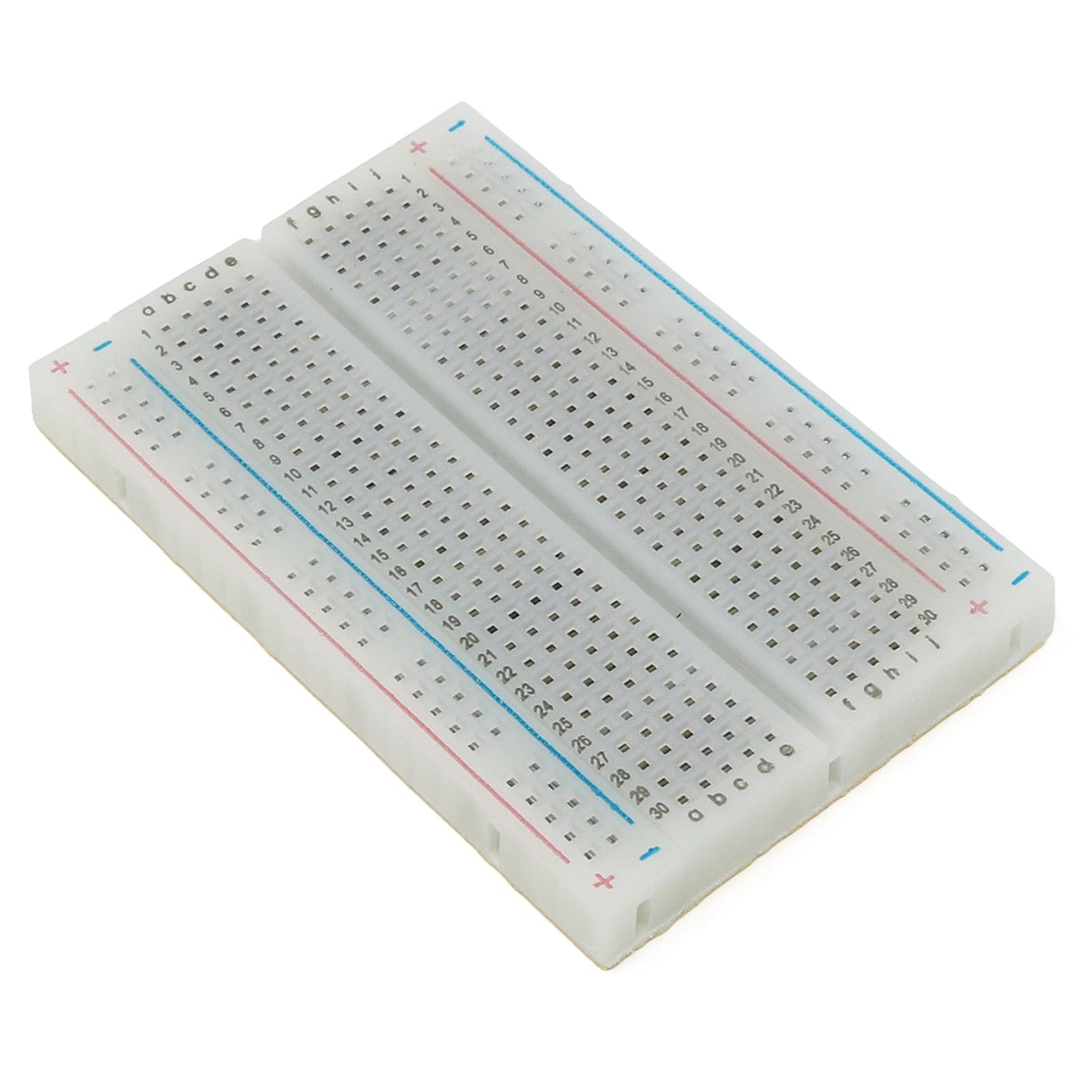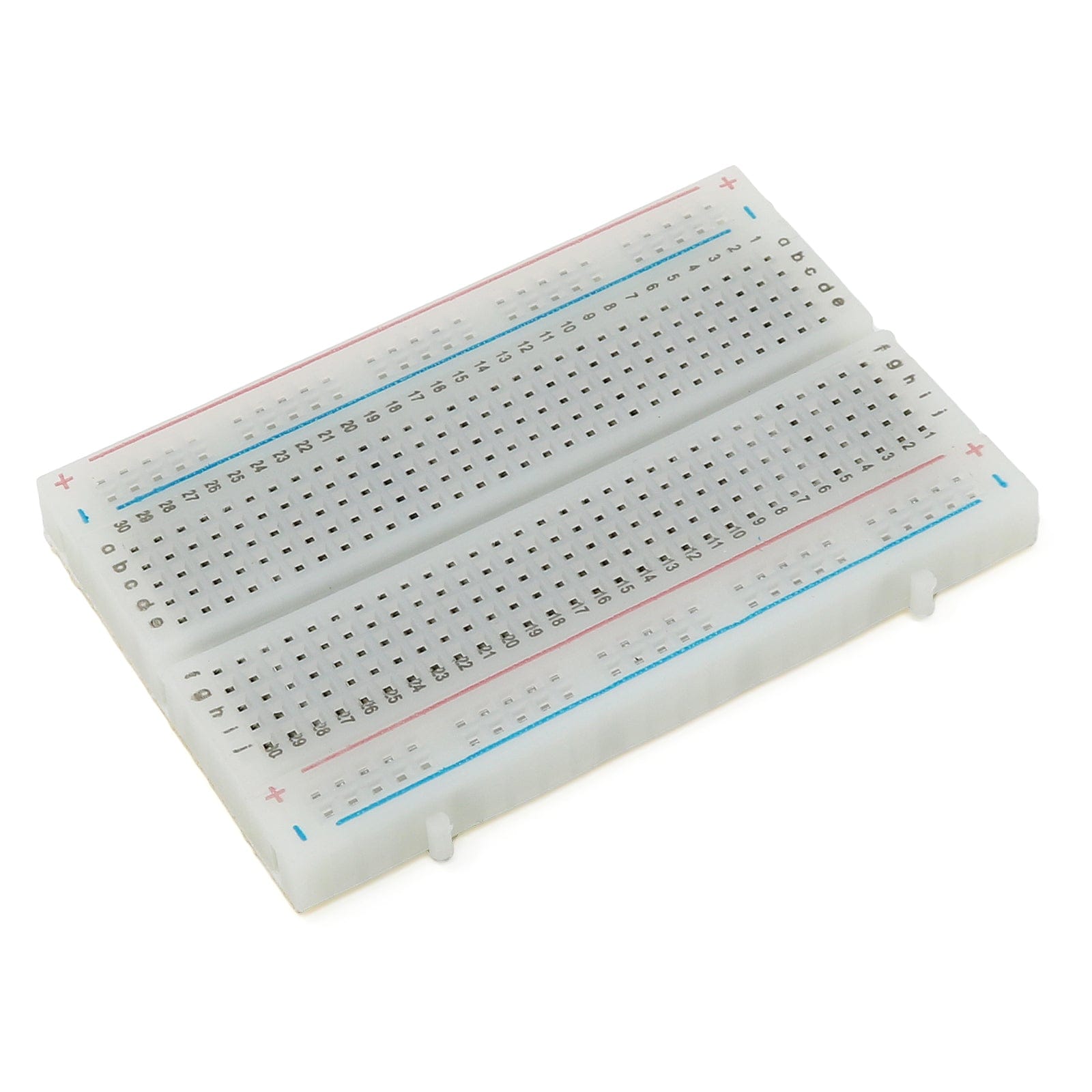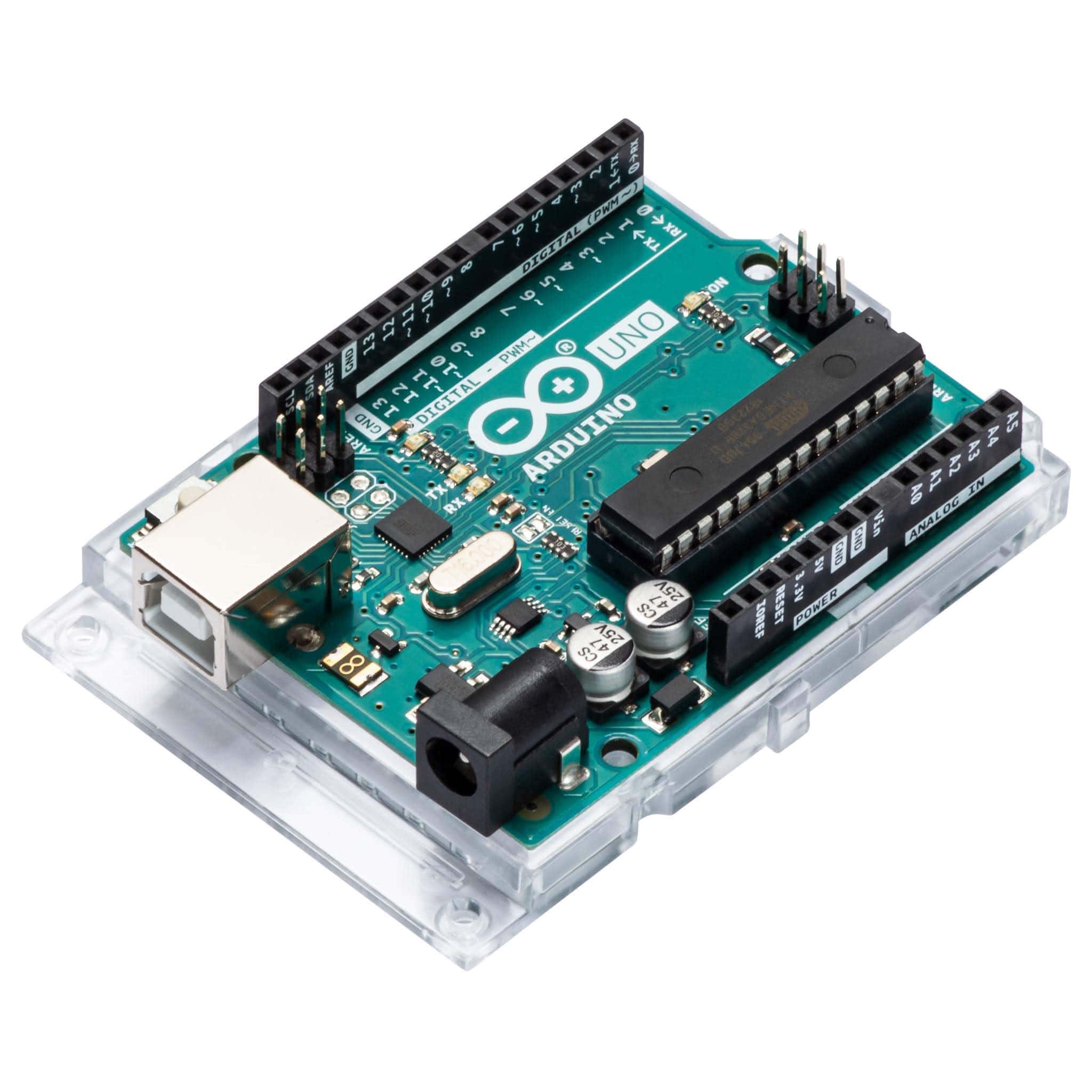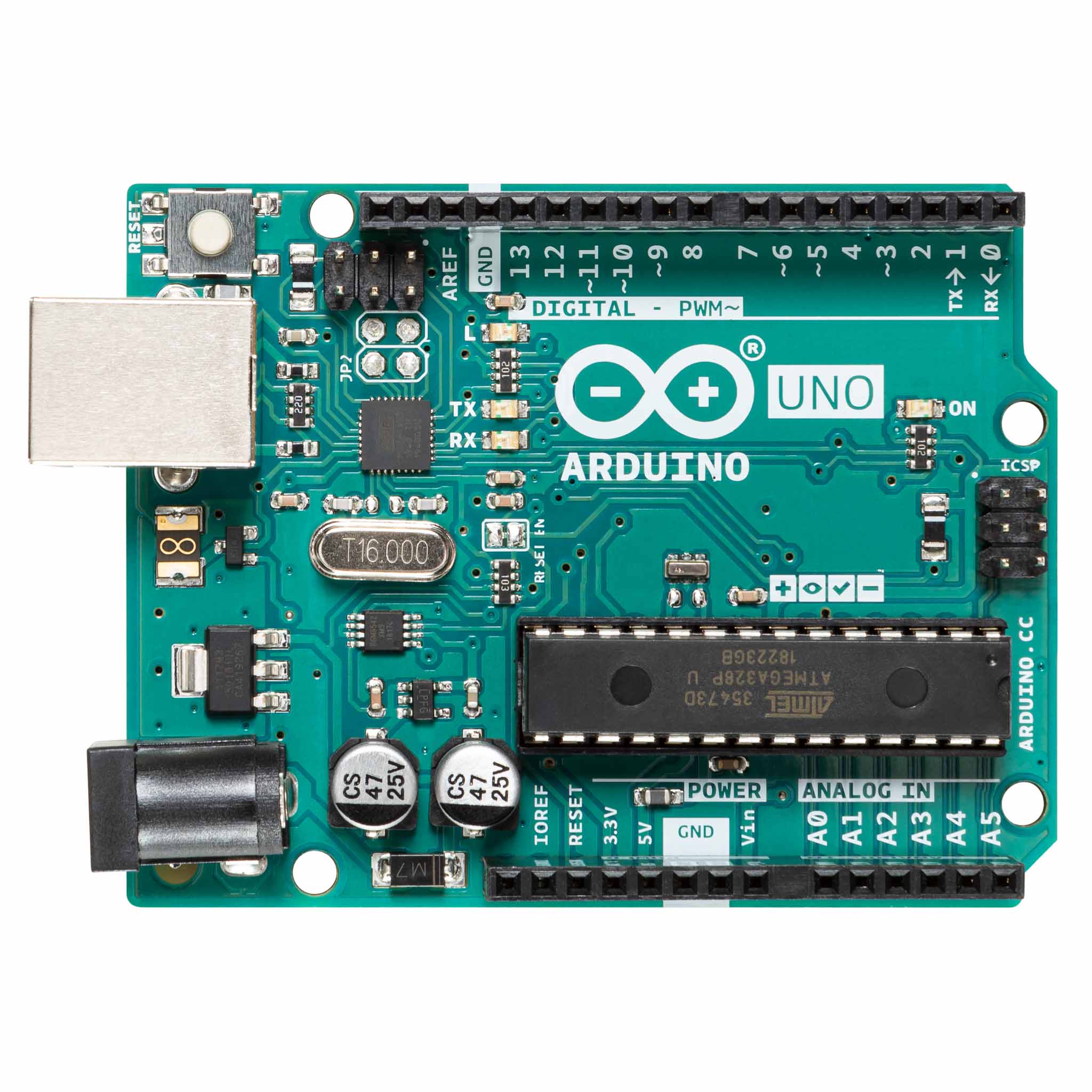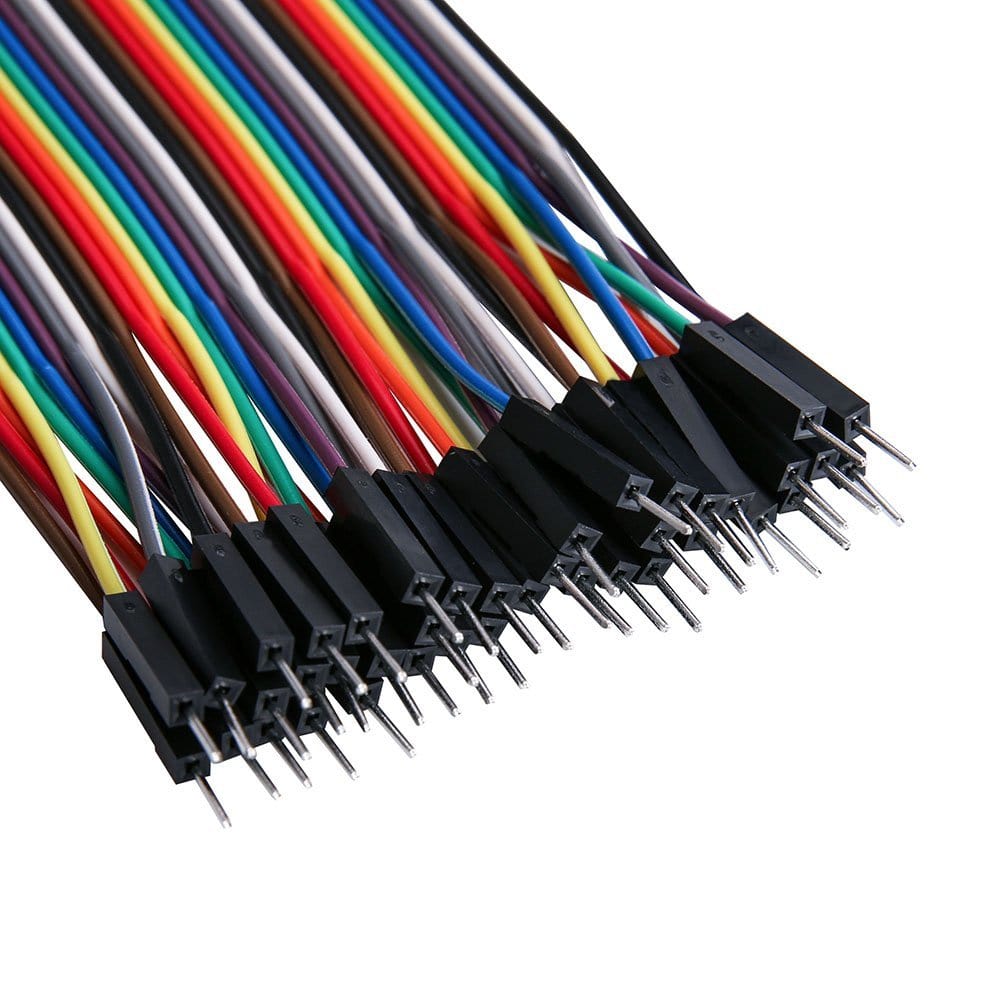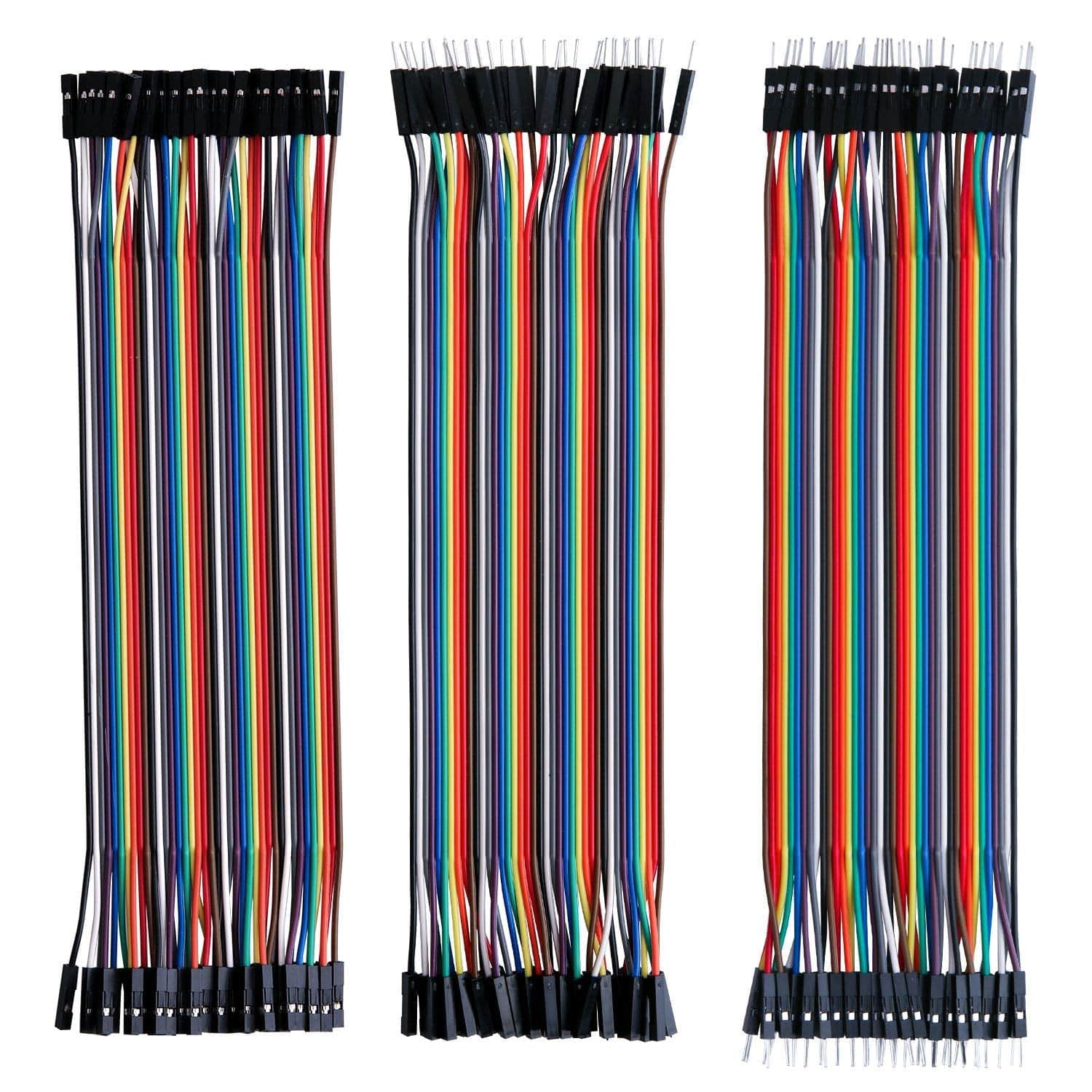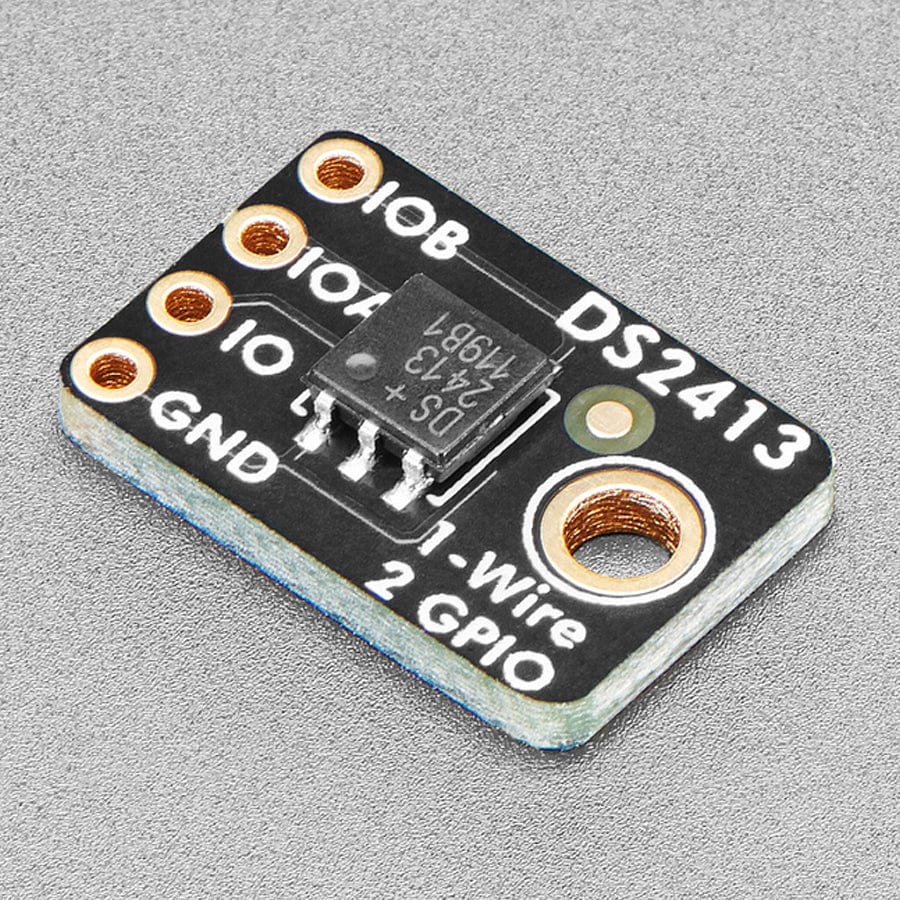
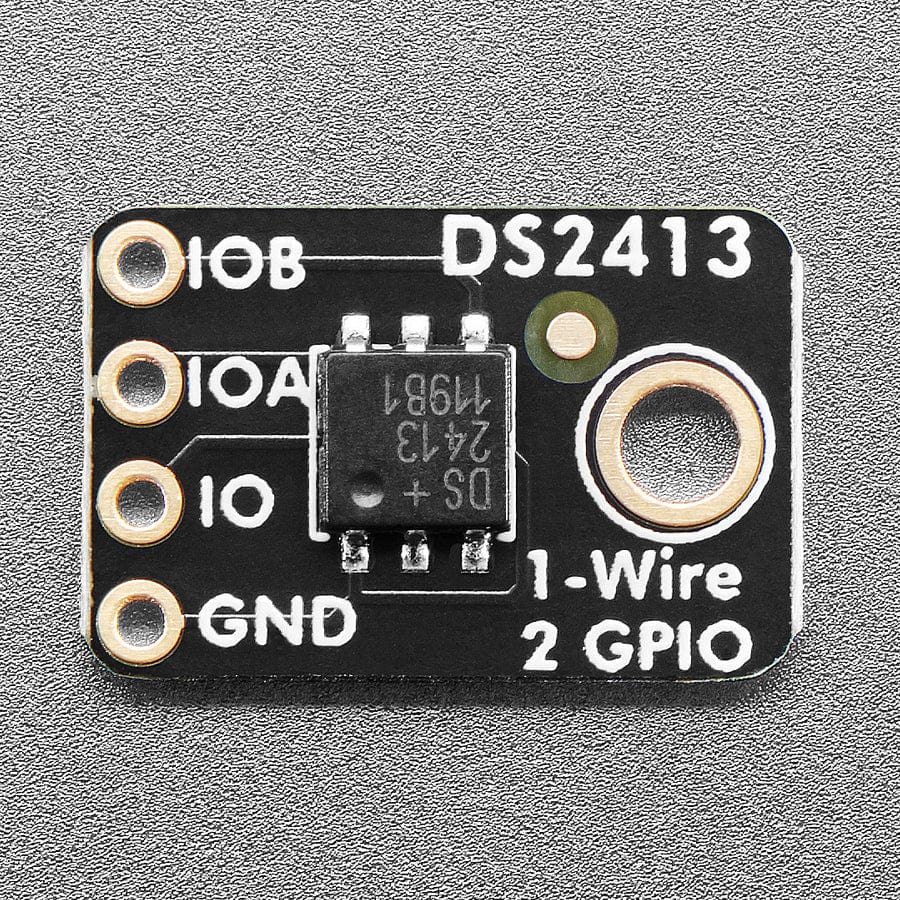
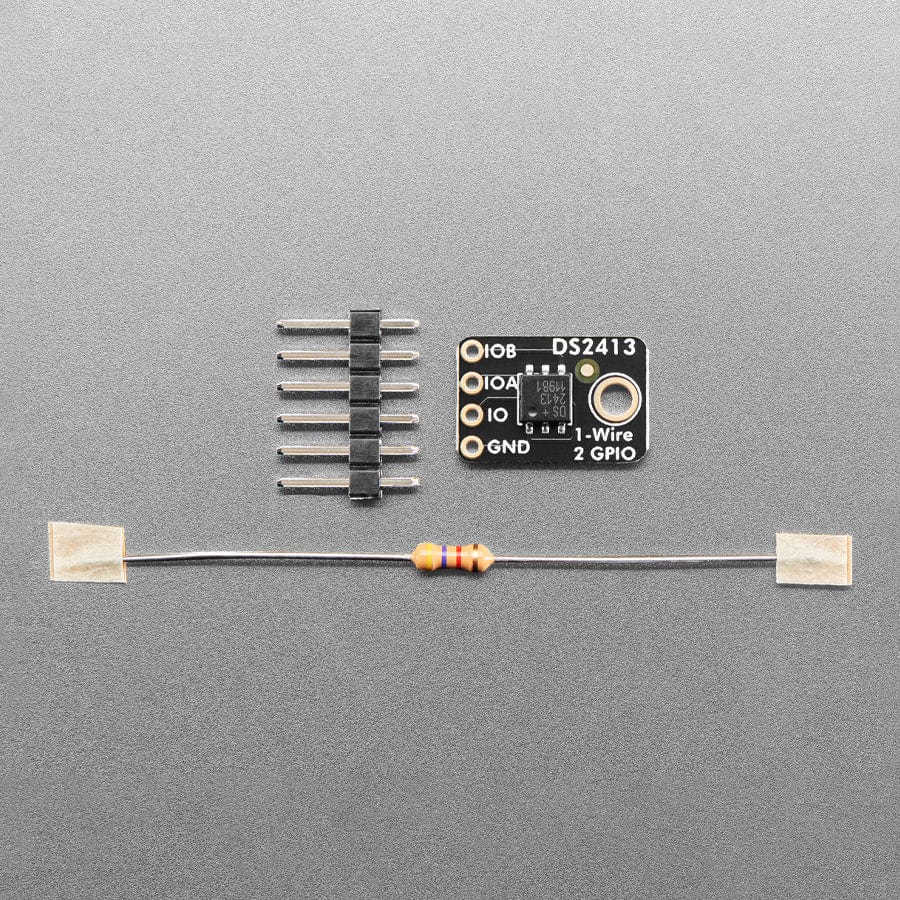
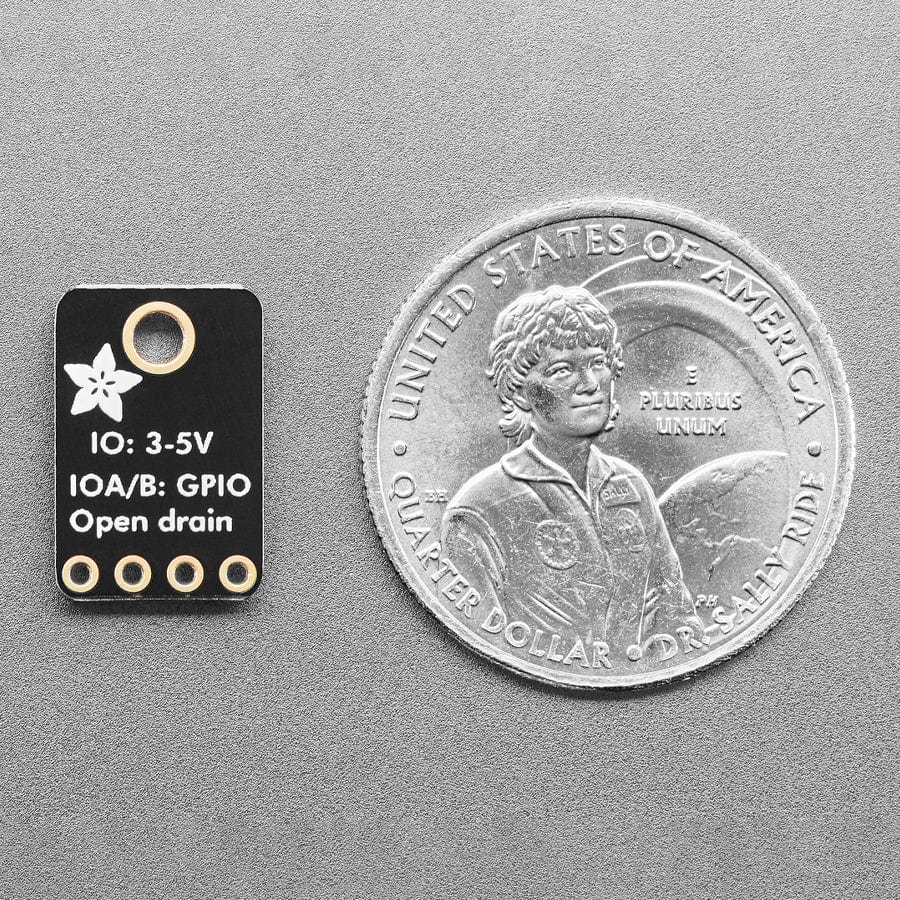
Login / Signup
Cart
Your cart is empty
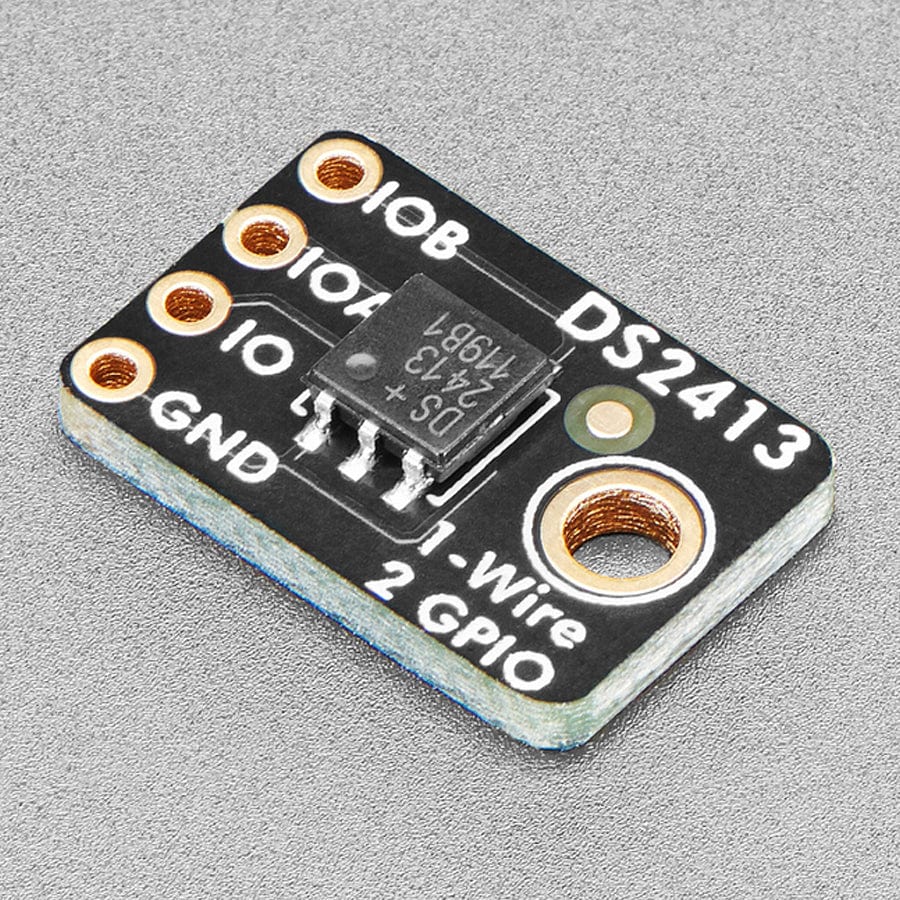
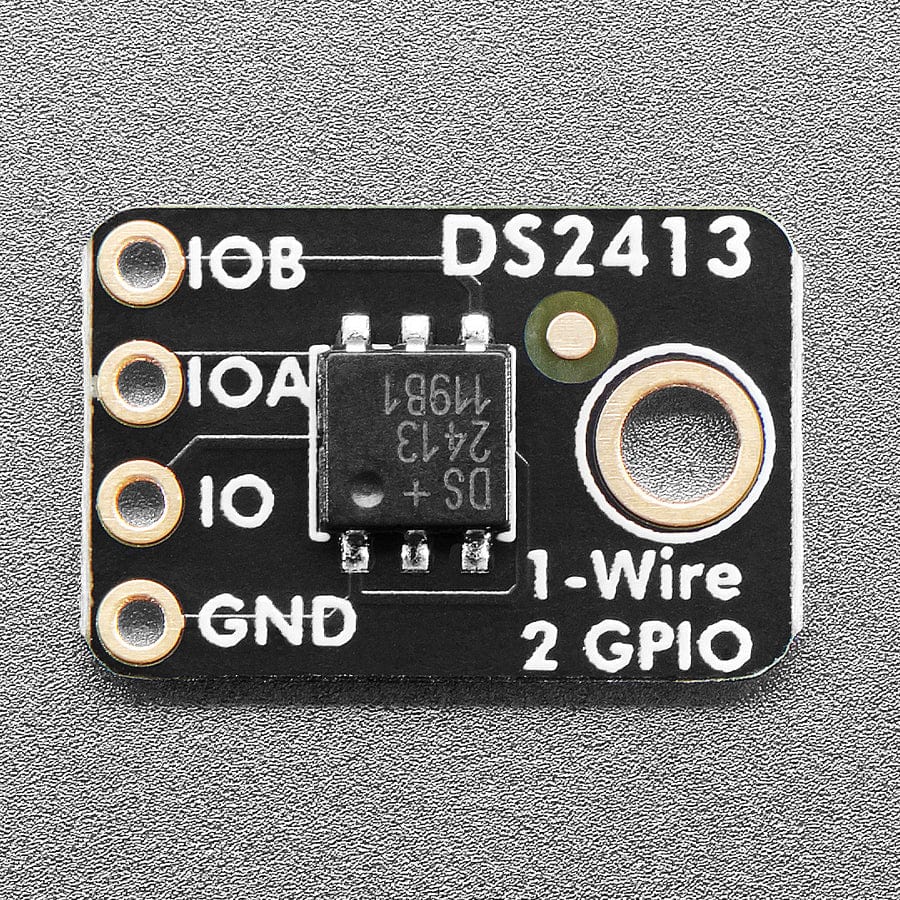
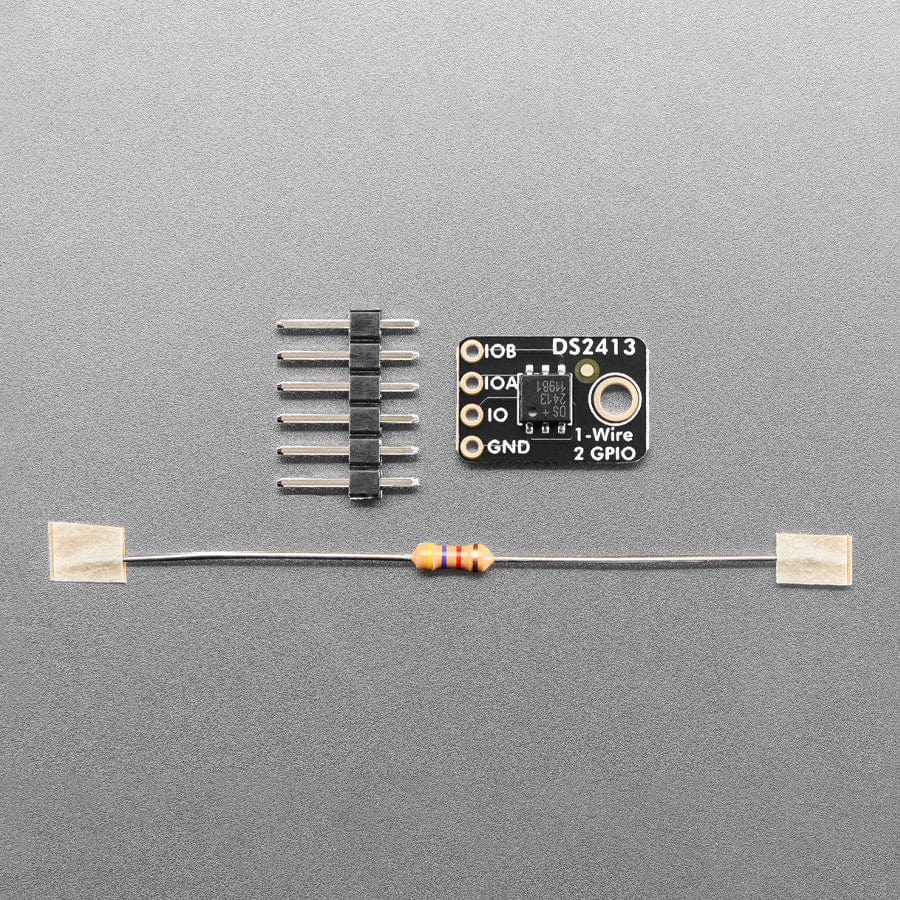
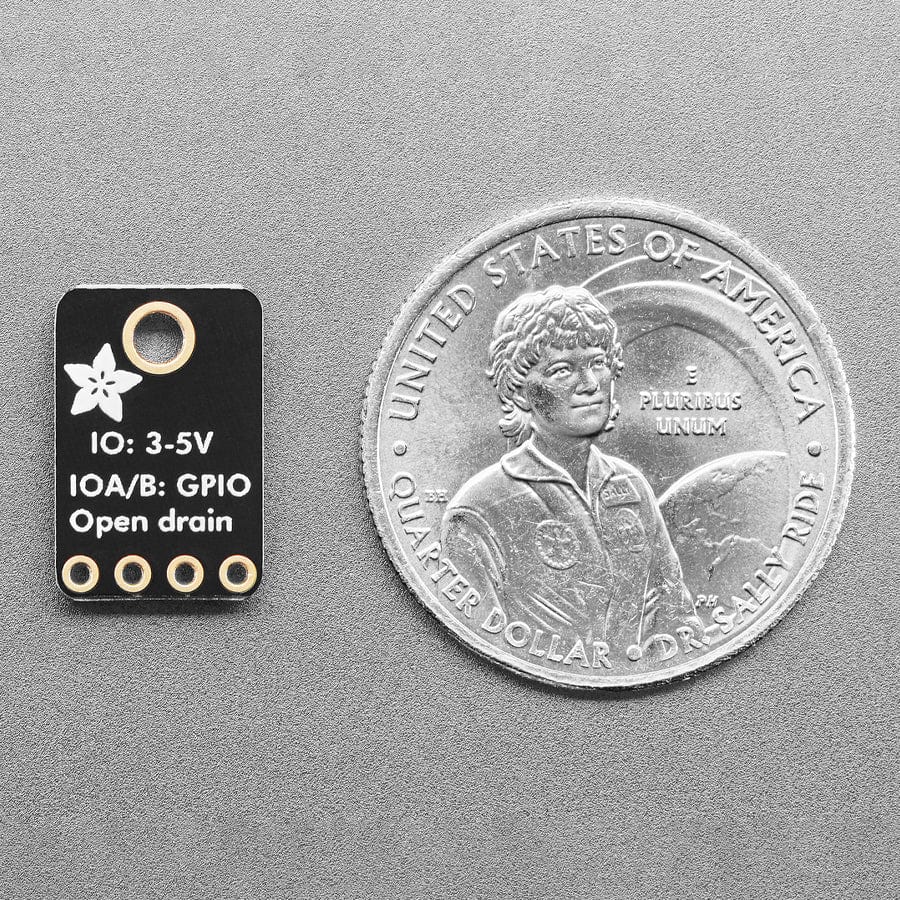
You're too cool for I2C, and SPI has so many wires, 8-bit parallel... how can that be fashionable!? You are a 1-Wire kinda gal, and you want more 1-Wire breakouts in your life to complement all of your great engineering. Well rock on, because here you go, it's a 1-Wire controller with two open-drain GPIO.
You can put as many of the DS2413s as you want on a single I/O line, each one is uniquely addressable and shares the single I/O pin happily. The two controllable I/O lines (PIOA and PIOB) can be used as inputs or outputs. They are open-drain, so if you want to power an LED or something, you'll need a remote power supply (see Maxim's product page for more details)
We have a basic Arduino sketch that uses the OneWire library to communicate with this chip. Don't forget to add the 4.7 Kohm resistor from I/O to your 1-Wire controller power supply (3.3V - 5V) on the Arduino side of the wires.





